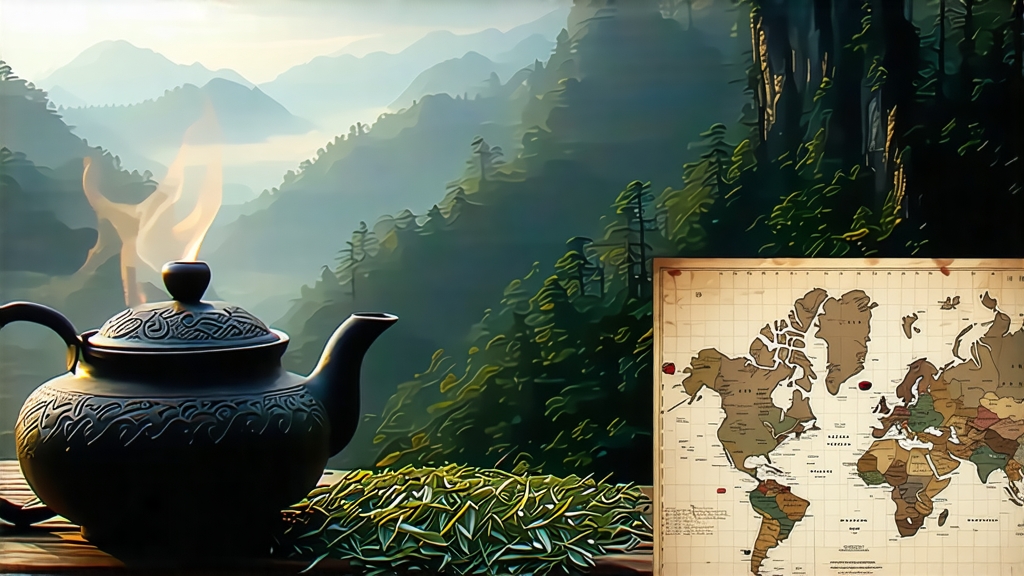
Ask most tea lovers to name a Chinese black tea and they will answer Keemun or perhaps Yunnan Gold; few realize that the very first black tea ever created was Lapsang Souchong, born in the cool gorges of the Wuyi Mountains in northern Fujian. Its Chinese name, Zheng Shan Xiao Zhong, literally means “fine mountain small leaf,” a humble phrase that conceals a saga of military intrigue, Dutch merchant ships, and the birth of a global beverage habit. This article invites the international reader to journey from 17th-century village smokehouses to 21st-century specialty cafés, discovering how a single pine-scented leaf altered the course of tea history and how to unlock its layered flavors in your own kitchen.
Historical Footprints
Local legend fixes the invention of Lapsang Souchong around 1568, when a passing army camped in Tongmu village, delaying the spring tea harvest. To save the plump leaves from withering away, farmers rushed them through withering, rolling, and drying over available pine fires. The resulting dark, smoky tea was an instant local curiosity, but it was the Dutch East India Company that catapulted it onto the world stage. By 1604 Dutch traders were shipping “bohea” (the Fukienese pronunciation of Wuyi) to Amsterdam, where it fetched higher prices than green tea because it survived the long sea voyage without molding. When Catherine of Braganza brought a chest to the English court in 1662, the fashion for “strong China tea” ignited London coffeehouses and, indirectly, the demand that would later fuel Assam and Ceylon plantations. Thus, every modern black tea is, in botanical and technological terms, a grandchild of Lapsang Souchong.
Terroir and Varieties
Tongmu village sits in a protected national forest at 27° N latitude, 1,200 m above sea level, where mist rising from the Jiuqu Xi (Nine-Bend Stream) moderates fierce afternoon sun. The soil is a stony, mineral-rich laterite locals call “purple sand,” prized for draining quickly yet retaining warmth. Within this 60 km² core zone, only indigenous cultivars—Xiao Ye Zhong (small leaf), Wu Niu Zao, and the rare Jiukeng—may legally bear the designation “Zheng Shan” (original mountain). Outside the gorge, neighboring counties produce “Wai Shan Xiao Zhong,” a perfectly drinkable cousin but lacking the resinous complexity that comes from Tongmu’s microclimate and centuries-old pine reserves.
Today the market distinguishes three stylistic variants:
-
Traditional Pine-Smoked Lapsang: leaves wither over local Masson pine fires, absorb smoke during rolling, then smoke again in bamboo baskets above a pinewood ember bed. The finished tea carries a pronounced yet elegant tarry note reminiscent of single-malt Islay whisky.
-
Modern “Unsmoked” Lapsang (also sold as “Zheng Shan Xiao Zhong Original Flavor): the same leaf craft but dried with hot air rather than smoke, allowing natural honey, longan, and lychee aromatics to dominate. This style emerged in 2005 to suit palates averse to smoke and now commands higher prices in East Asia.
-
Special Grade “Wild Lapsang”: harvested from self-seeded bushes growing among cliffs 1,600 m up, hand-plucked once per year. The leaf is smaller, more camphoraceous, and yields an amber liquor with hints of dried apricot and cedar. Production rarely exceeds 300 kg annually, most of it pre-sold to collectors in Shenzhen and Tokyo.
Crafting the Smoke: A Step-by-Step Look
Plucking begins at Qingming festival when two leaves and a bud measure exactly 2.5–3 cm. The fresh leaf is laid 3 cm deep on bamboo trays inside a wooden “qing lou” loft where pinewood embers in a ground-level hearth generate 28 °C convection currents. Over eight hours the leaf loses 60 % moisture, developing a grassy-sweet aroma. Rolling follows, but unlike orthodox CTC methods, Tongmu masters use a 55 cm diameter bamboo kneading basket; the gentle bruising preserves cell walls so that smoke adheres only to the surface, preventing harshness.
Oxidation occurs in wooden barrels lined with wet cotton; the leaf piles